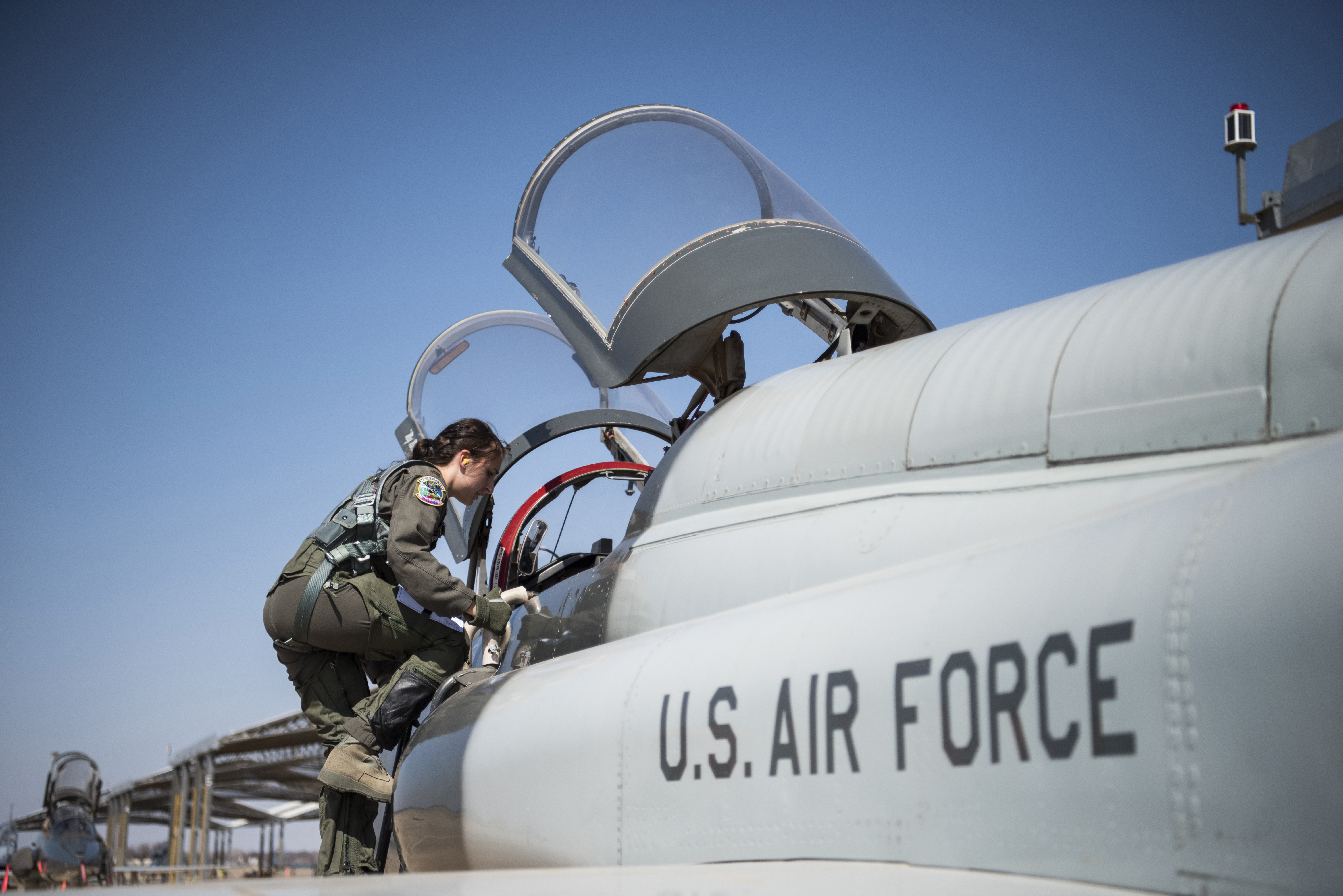
A pilot with the 25th Flying Training Squadron climbs into a T-38C Talon, March 13, 2018. USAF photo by TSgt. Erik Cardenas.
The Government Accountability Office Wednesday called on the Air Force to re-evaluate fighter pilot squadron requirements, including revising the current assumptions of fighter pilots’ workloads and gauging the impact of future incorporation of unmanned aerial systems, or drones, into combat aviation.
The recommendations, which the Defense Department agreed with, were contained in a GAO report to the Senate Armed Services Committee, which also called for the Navy and Marine Corps to re-evaluate fighter pilot squadron requirements in light of current pilot shortages.
The report found that all three services were short of fighter pilots in terms of the numbers of pilots compared to the number authorized from fiscal year 2013 to 2017. In FY 2017, the Air Force showed the largest gap, at 27 percent, according to the report. That gap is expected to continue through FY 2023, the report stated.
“Service officials attributed these gaps to aircraft readiness challenges, reduced training opportunities, and increased attrition of fighter pilots due to career dissatisfaction,” according to the report.
The services already are taking actions, such as raising financial incentives to retain pilots. They have not, however, recently re-evaluated squadron requirements in light of more workload on pilots and the introduction of drones, although they are supposed to be reviewed every two years and revised in light of new conditions, the report said.
While service officials said conditions do not warrant a change in requirements, “fighter pilots and squadron leaders interviewed at locations GAO visited consistently stated that the typical workload has significantly increased in recent years due to, among other things, changes in fighter aircraft tactics and technology and reductions to administrative support in squadrons,” according to the report.
If the services do not re-evaluate their squadron requirements to reflect the current conditions, they may have trouble figuring out how to meet their personnel needs, the report said.